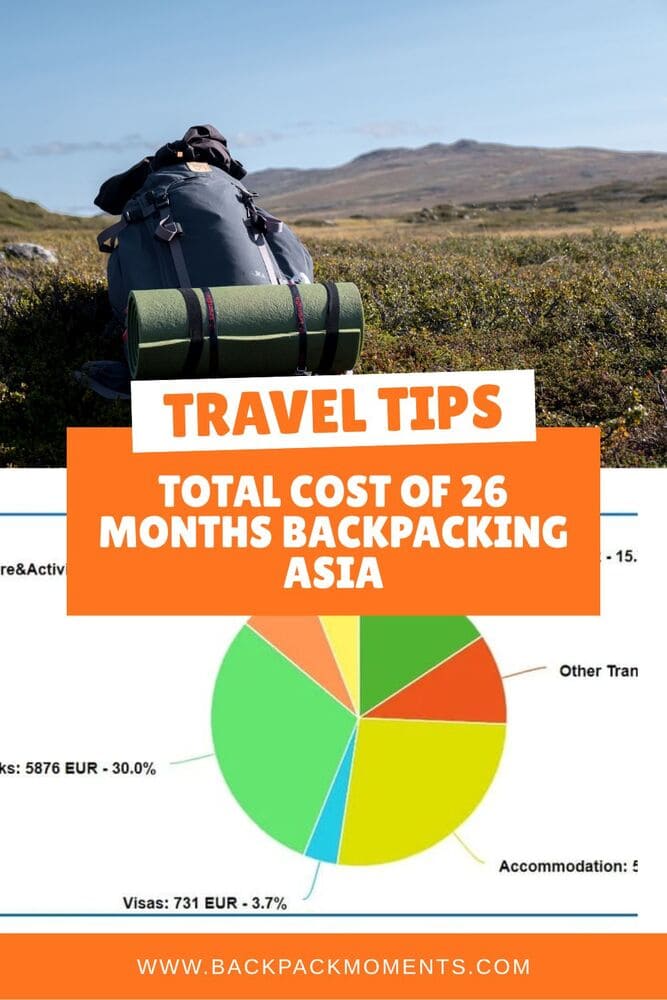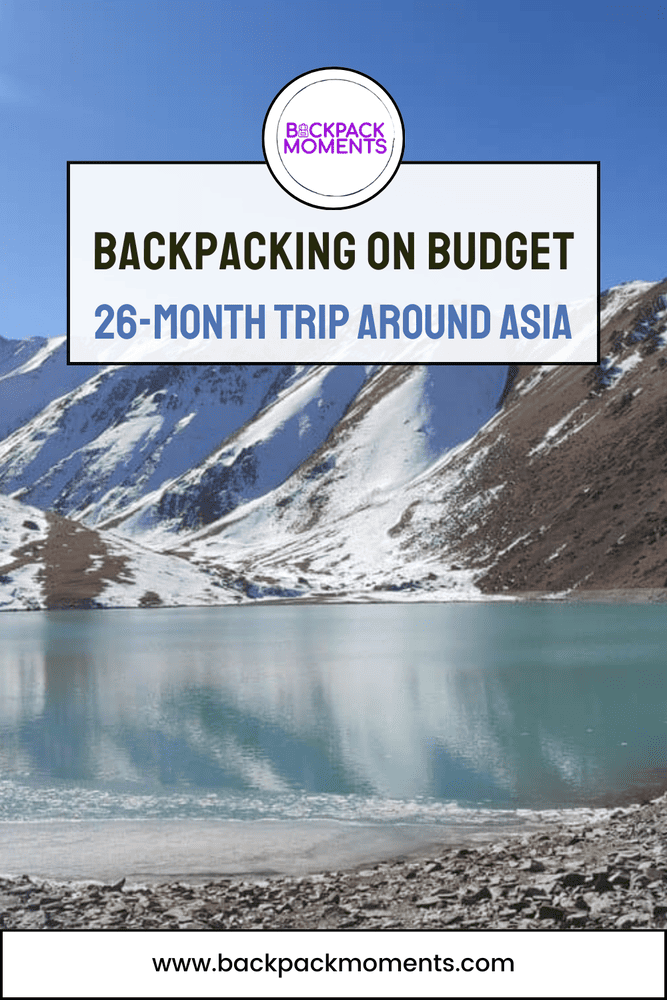How Much Does Long-Term Backpacking Cost?
This post may contain affiliate links. If you make a purchase using one of these links, I may receive a small reward at no extra cost to you. See my Disclosure Policy for more information.
Are you planning to backpack for a while and want to plan a budget?
No two people are the same and no two budgets match. Yet, I hope to give a rough idea of how little you really need to start a long trip. Depending on your travel style, you may need as little as 13 EUR per day, although in most cases, it is more in the range of 33 EUR per day.
Below, you will also find the estimated cost breakdown of my 26-month backpacking trip around Asia (and a few weeks in Oceania), so you’ll have access to a lot of first-hand data and tips.
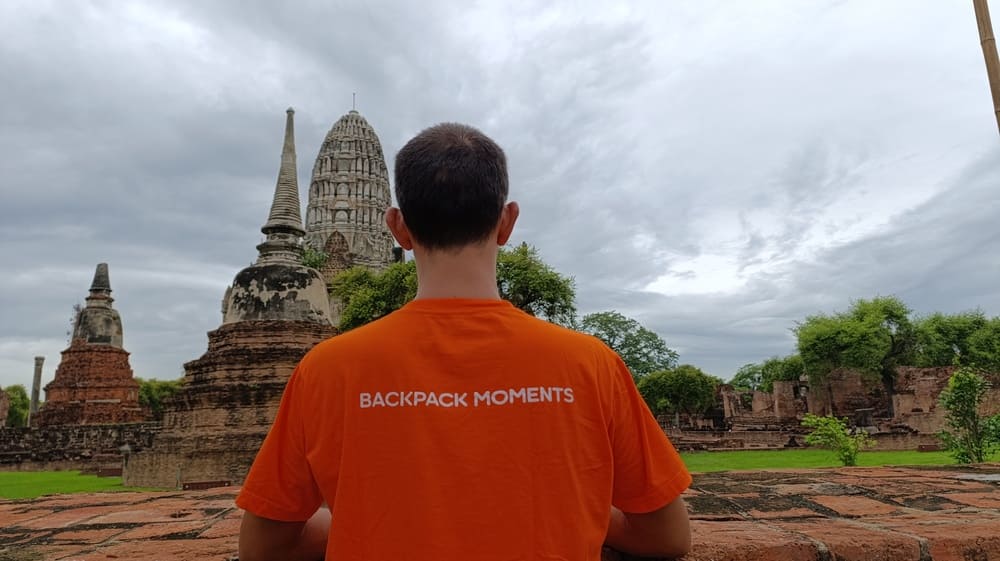
How much does backpacking cost?
As much as you have and as little as you’re willing to put up with.
Of course, it depends a lot. The 2 factors that move the needle the most are:
- How expensive the countries you travel to are.
- How much convenience you are willing to forgo.
The 3 archetypes of backpackers
Turtles

Turtle backpackers travel slowly, carry their home on their backs (a tent, silly), eat like locals or cook in hostels, visit cheap countries, and find happiness in the journey itself rather than in expensive activities and tours.
Turtles need as little as 400 EUR/month or 4800 EUR per year.
Foxes

Fox backpackers are adaptable and seek out affordable but comfortable places to stay, and occasionally splurge on local experiences.
I consider myself a fox.
We are resourceful and cautious, exploring new areas but keeping an eye on expenses.
Foxes need around 1000 EUR/month or 12000 EUR/year.
Eagles

Eagle backpackers soar between destinations quickly, often opting for flights or faster transport methods, and enjoy a more luxurious pace.
They’re willing to pay extra for comfort, views, and unique experiences. value freedom and have a bit more financial flexibility, allowing them to go where they please without the strict budgeting of turtles and foxes.
Eagles spend upwards of 1600 EUR/month or 19200 EUR/year.
You can greatly minimize some things like transport and accommodation (hitchhiking, the tent, Couchsurfing, house sitting, volunteering, etc.) but others like visas and food are a stable overhead so traveling for less than 400 EUR a month requires some serious planning, deprivation, and flexibility.
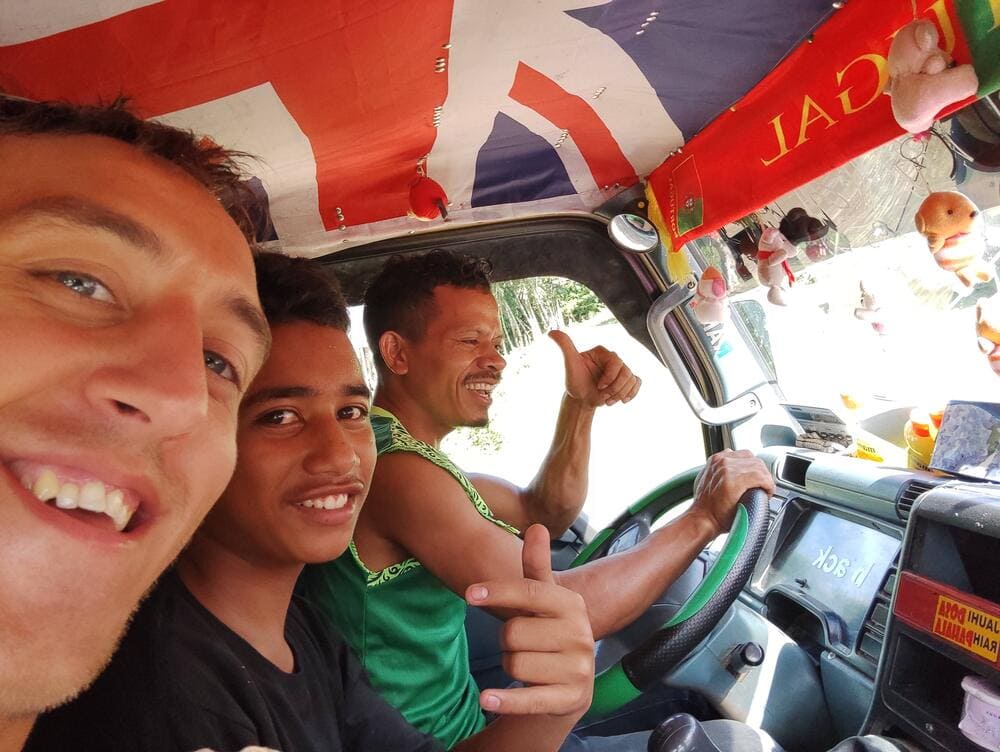
On the other side, it’s easy to go past the 1600 EUR per month mark by flying more often, eating in fancy restaurants, and staying in bougie villas.
Even the estimates above are entirely based on my experience and observations and have Southeast Asia and Central Asia in mind – two very budget-friendly regions of the world.
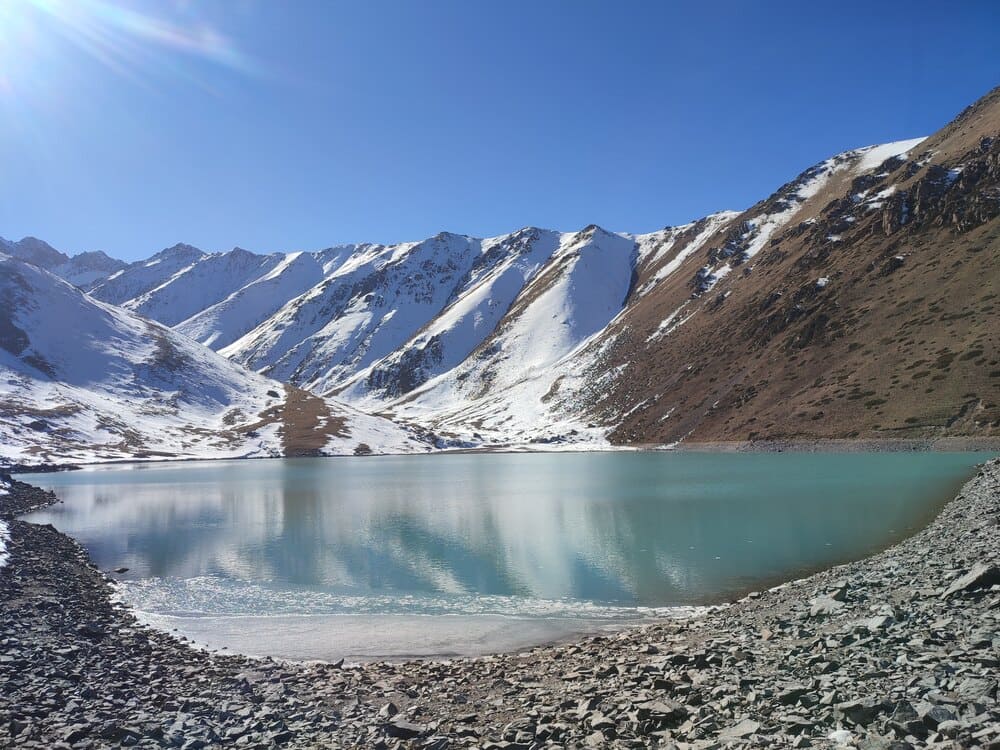
My 26-month trip
On the 1st of August, 2022, I embarked on a journey without a planned end date. I returned home on the 1st of October, 2024 – exactly 26 months later.
During this period, I visited 24 countries, some of which multiple times.
- Middle East: Turkey, Iraqi Kurdistan, UAE, Kuwait, Oman
- Caucasus: Armenia, Azerbaijan, Georgia
- Central Asia: Kazakhstan, Kyrgyzstan, Uzbekistan
- Southeast Asia: Cambodia, Indonesia, Laos, Malaysia, Myanmar, Singapore, Thailand, Timor Leste, Vietnam
- East Asia: Taiwan
- Oceania: Australia, Fiji, New Zealand
You can find individual cost breakdowns for some of these countries on the budget reports page. Why only some?
Because it became increasingly difficult and time-consuming to keep a detailed track of all expenses after a couple of months into my trip.
Hence why all the numbers below are estimates.

Disclaimers
I will give you my long-term backpacking costs based on my trip and travel style. They are unavoidably different than yours.
And yet, I believe the numbers below will give you a rough idea.
But:
- I spent in many different currencies with floating exchange rates. My home currency is EUR, so the numbers I share are in EUR.
- I have not adjusted for inflation. Prices have changed over 2 years of travel and will continue to change in the future.
- This is only costs, not NET after income.
- I have excluded many small incidental expenses not related to traveling (hosting and domain, taxes, monthly bank fee, etc).
- I spent much more time in cheaper countries than in expensive ones.
- I didn’t travel non-stop. I had months when I stayed in one place.
- I am a “fox” backpacker. See above.
- Of the 26 months, 17 I backpacked solo and during the last 9, I traveled together with my significant other. Some expenses were shared and this is factored in. Traveling as a couple is cheaper than 2 times solo expenses. The amounts are slightly adjusted to show numbers for a solo traveler.
Costs Breakdown
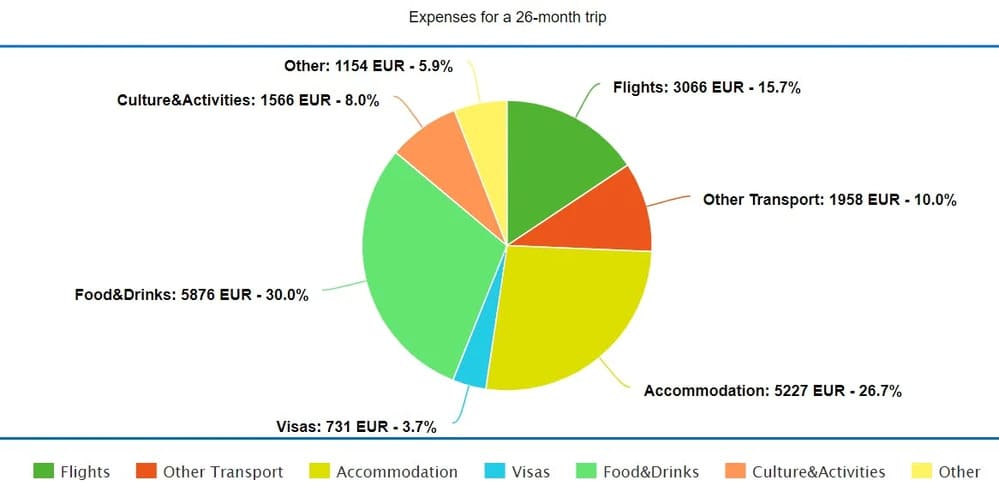
Flights
I took 40 flights. The cheapest was 12 EUR (Kuala Lumpur to Penang) whereas the most expensive was 292 EUR (Muscat-Abu Dhabi-Jakarta, yes, technically 2 flights).
In total, I paid 3066 EUR. This is 76,65 EUR per flight on average.
Other transport
For the love of all mangoes, I cannot tell you exactly. Countless bus journeys, train rides, metro tickets, taxis and GoJeks (motorcycle taxis popular in Southeast Asia), boat rides, ferries… it was just too much to track.
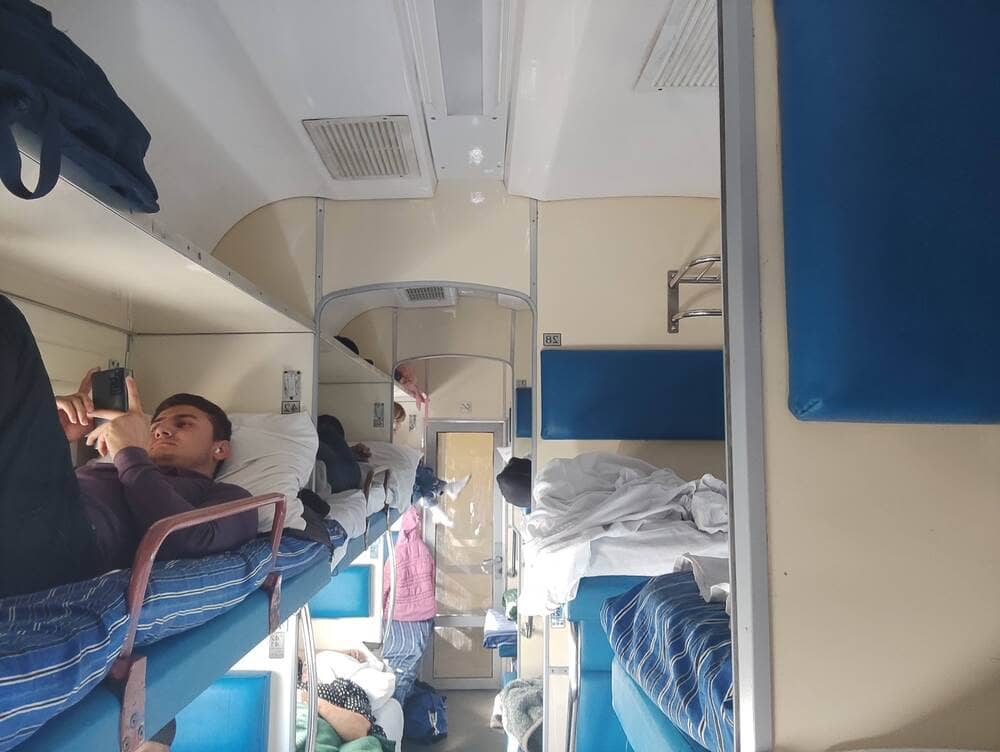
Some months, I traveled over 2000 km overland and transport was 20% of all expenses: As was the case with my 30-day trip in Vietnam covering the entire country.
Others months I stayed put and didn’t travel much. I practically lived in Yogyakarta like a local for a few months.
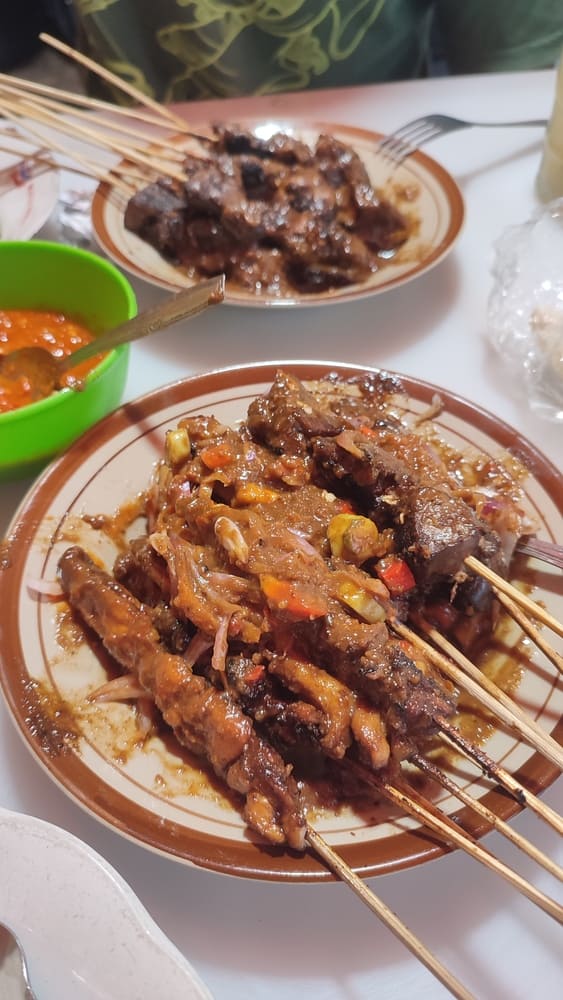
I don’t have an exact number, but let’s say it evens out and transport was around 10% of my total expenses. That’s 1958 EUR or 75.3 EUR/month.
Accommodation
Of the 791 nights to account for, around 100 I spent Couchsurfing.
Around 20 I spent inside overnight buses, trains, or flights.
Around 10 I spent at friends.
The remaining 661 nights I paid for.
Around 200 nights I spent in budget hotels with nightly rates between 6 EUR and 20 EUR. The average was around 12 EUR.
Around 200 nights I spent in аn apartment/room rented for a whole month. On average, I believe I spent around 5 EUR per night. This is extremely cheap as most of that was in Indonesia where lodging is very inexpensive.
The rest (~261 nights) I spent in hostels. The cheapest hostel I stayed at cost just 1 EUR/night (in Da Lat, Vietnam) while the most expensive was 26 EUR at Lake Tekapo in New Zealand. On average, I paid 7 EUR per night for hostels.
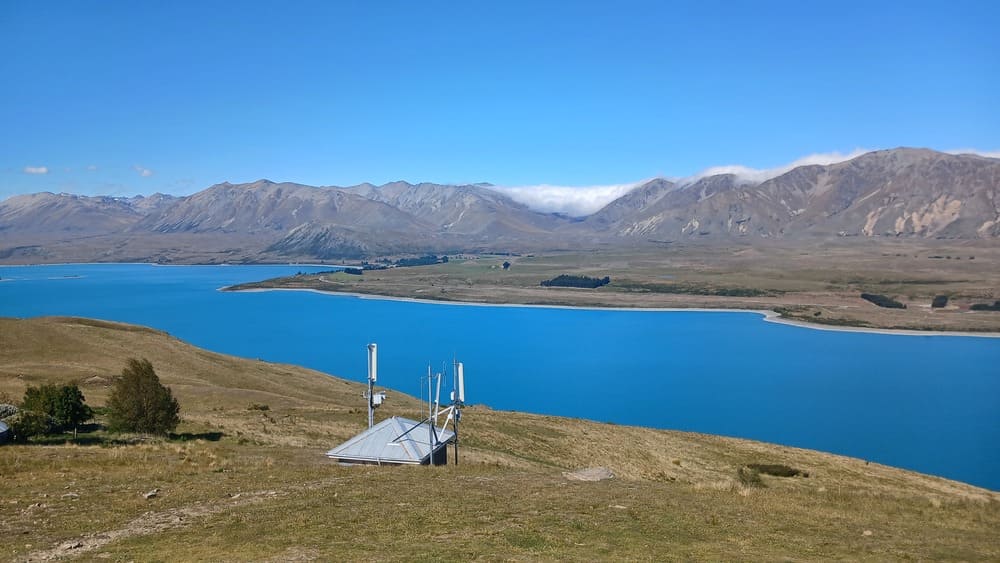
In total, I spent an estimated 5227 EUR on accommodation. The average is 201 EUR/month or 6.61 per day or 7.91 EUR per paid night.
Visas
I paid for 22 visas, mostly online, on arrival, or extensions. The cheapest was 9 EUR for Kuwait, whereas the most expensive ones were 67 EUR for Iraq, 55 EUR for Thailand (before the new 60-day rules), and 46 EUR for Myanmar.
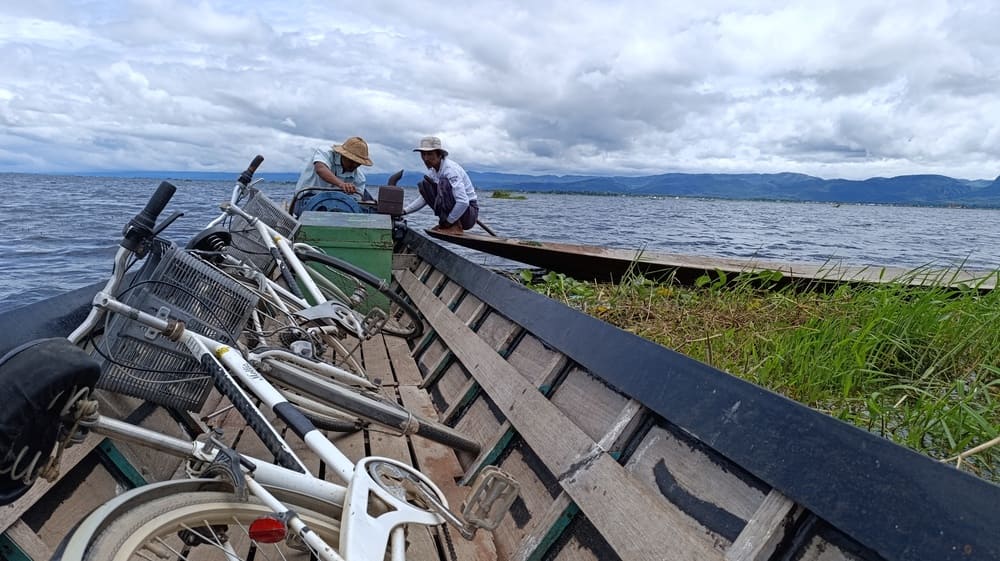
In total, I spent 731 EUR on visas.
Visa costs may be more or less for a similar trip, depending on the strength of your passport.
Food and Drink
I don’t go hungry, experiment with local food, love street snacks, and indulge in exquisite treats now and again. I love having dessert after a meal (check my favorite Indonesian desserts).
I drink coffee daily and love hydrating with something tastier than water but limit alcohol, especially in Islamic countries like Indonesia and Malaysia where it’s very expensive.
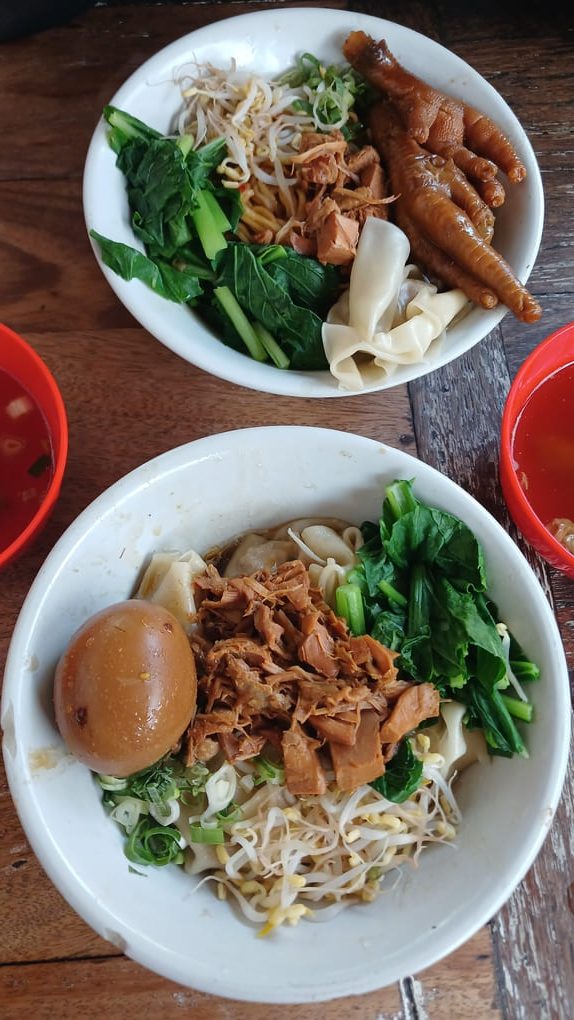
I say these so you get an idea because I cannot tell you an exact number.
Sustenance is pretty cheap in Asia and you can eat well for as little as 2 EUR/day, although it’s usually a bit more. For example, check the prices in Bali where you can eat like the locals do for less than 1 EUR per meal or splurge millions of Rupiah in fancier restaurants.

My back-of-the-napkin calculations show that around 30% of my expenses are for food and drinks.
That makes around 5876 EUR, 226 per month, or 7.43 EUR / day for food.
Museums, Activities, Tours, Entertainment
I like to mix popular activities and off-the-beaten-track things that I usually organize myself. I rarely go on packaged tours. This means that some of the expenses are considered transport instead of activities.
I appreciate free things to do, especially when I feel overwhelmed by choice or have already done/seen something a dozen times.
In Southeast Asia, some popular tourist places like Angkor Wat, Borobudur, and Prambanan cost quite a lot in entrance fees – a whopping 30-40$!
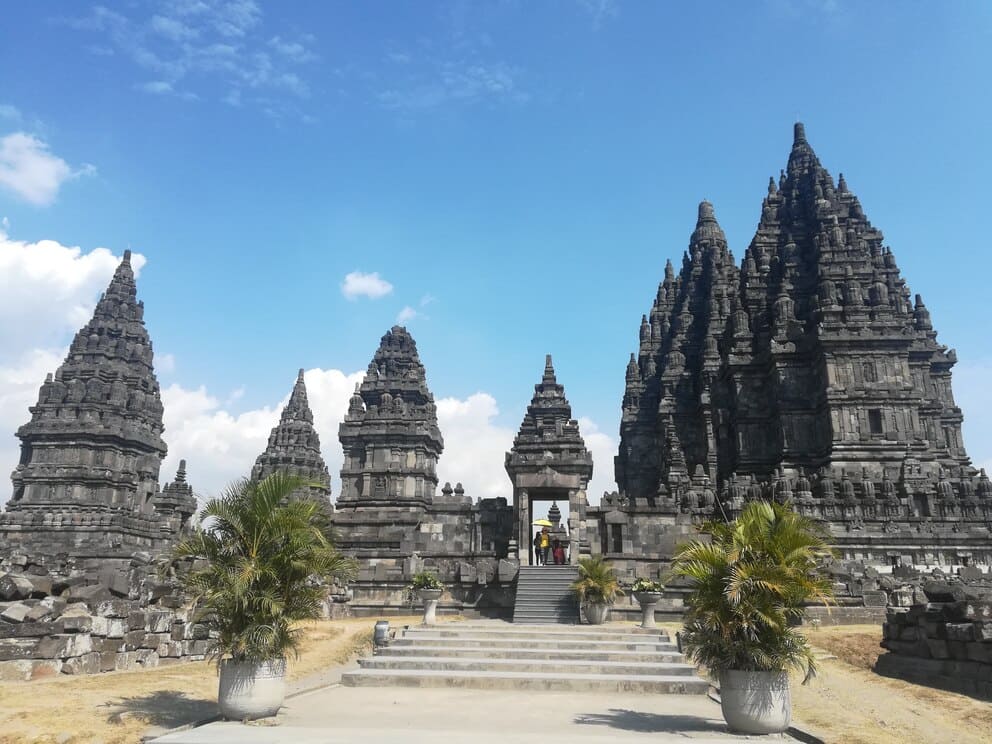
Most places in Thailand have 2 prices – one for locals and another one, up to 10 times higher, for foreigners.
Museum tickets, albeit cheap, also stack up to a surprisingly high amount after a while.
On the entertainment front, I like massages (who doesn’t?) and they are cheap but the costs can quickly mount up. Same with going to the cinema, a Javanese theater, or other performances. Balance is imperative.
That said, I believe somewhere around 8% of my expenses I spent on various activities, entertainment, and culture. This is 1566 EUR, 60 per month, or 1.98 EUR/day.
Other
Toiletries, OTC meds, sunscreen, mosquito repellent, 3 trips to the dentist, clothes, local SIM cards, laundry, repairs, a new smartphone, unavoidable ATM access fees, and a plethora of other smaller expenses.
All these add up to an approximate 1154 EUR (44 per month or 1.46 per day).
How to spend less?
Nobody will ever ask “How to spend more?” but many wonder how they can travel for less.
I think of it as a trade-off between price and convenience. If you’re not willing to pay the price, you must be willing to put up with the inconvenience.
Here are just some ways to reduce your costs while backpacking:
- Get a tent
- Fly less and only with a carry-on bag
- Stay in places longer
- Rent an apartment instead of staying in hotels. A month in a rented apartment can even be cheaper than 30 days in a hostel!
- Couchsurf
- Hitchhike
- Cut down on sugary drinks and alcohol
- Do your own laundry
- Organize activities yourself
- Travel in the low season
- Volunteer with WorldPackers or HelpX
- Don’t visit every single museum – you won’t remember everything anyway
- Use public transportation
- Eat street food
- Buy fruits from local markets instead of supermarkets
Final musings on the cost of backpacking and long-term travel
People are different and their travel style reflects it. Money is a means to an end and the end is usually a function of who you are.
If you start overthinking it, you will never have enough money to travel the world.
But analysis paralysis is a dangerous curse.
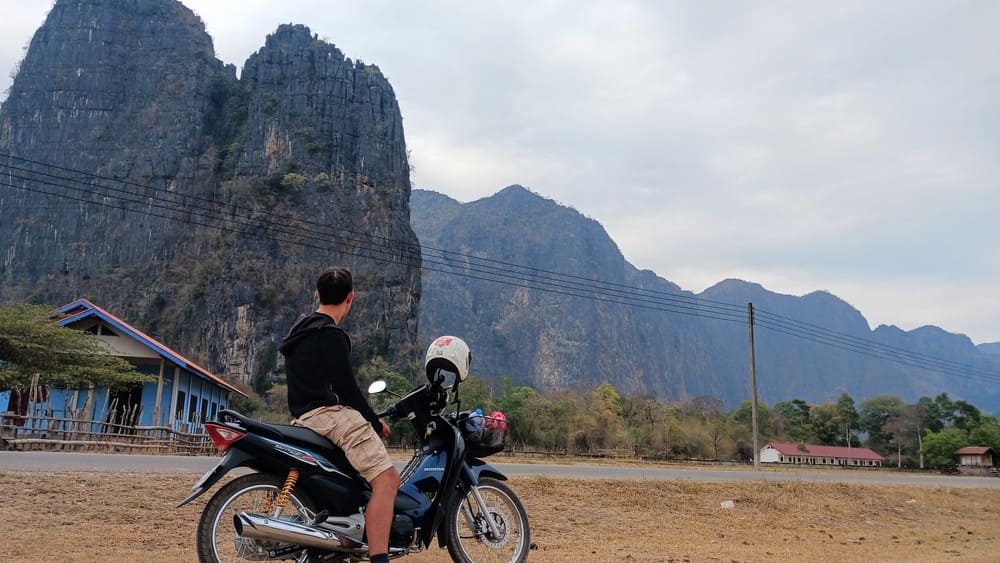
Picture from the Thakhek Loop in Laos.
So think about it the other way around: you already have enough money to travel!
Make the necessary sacrifices, scale down, live humbly, and just go!
